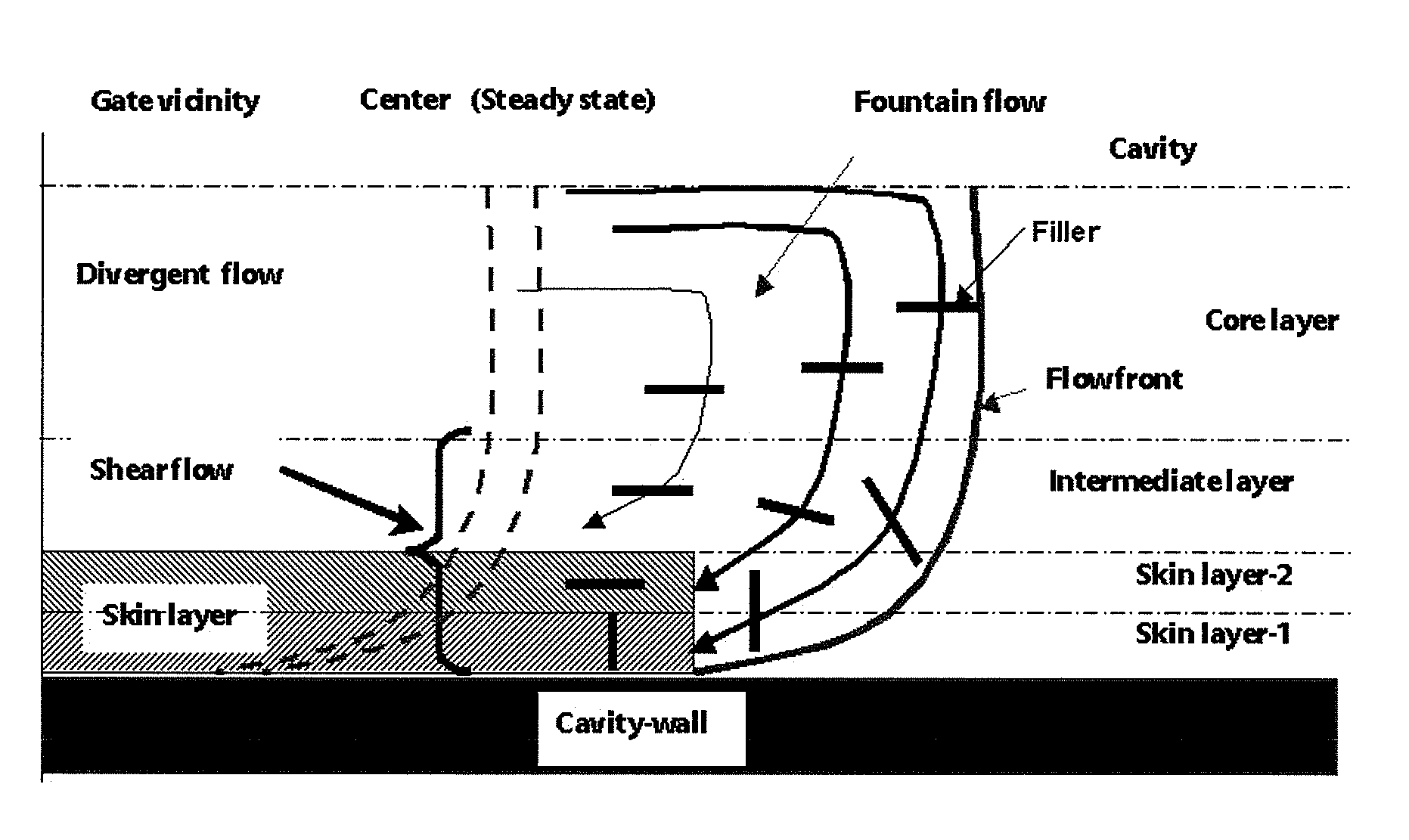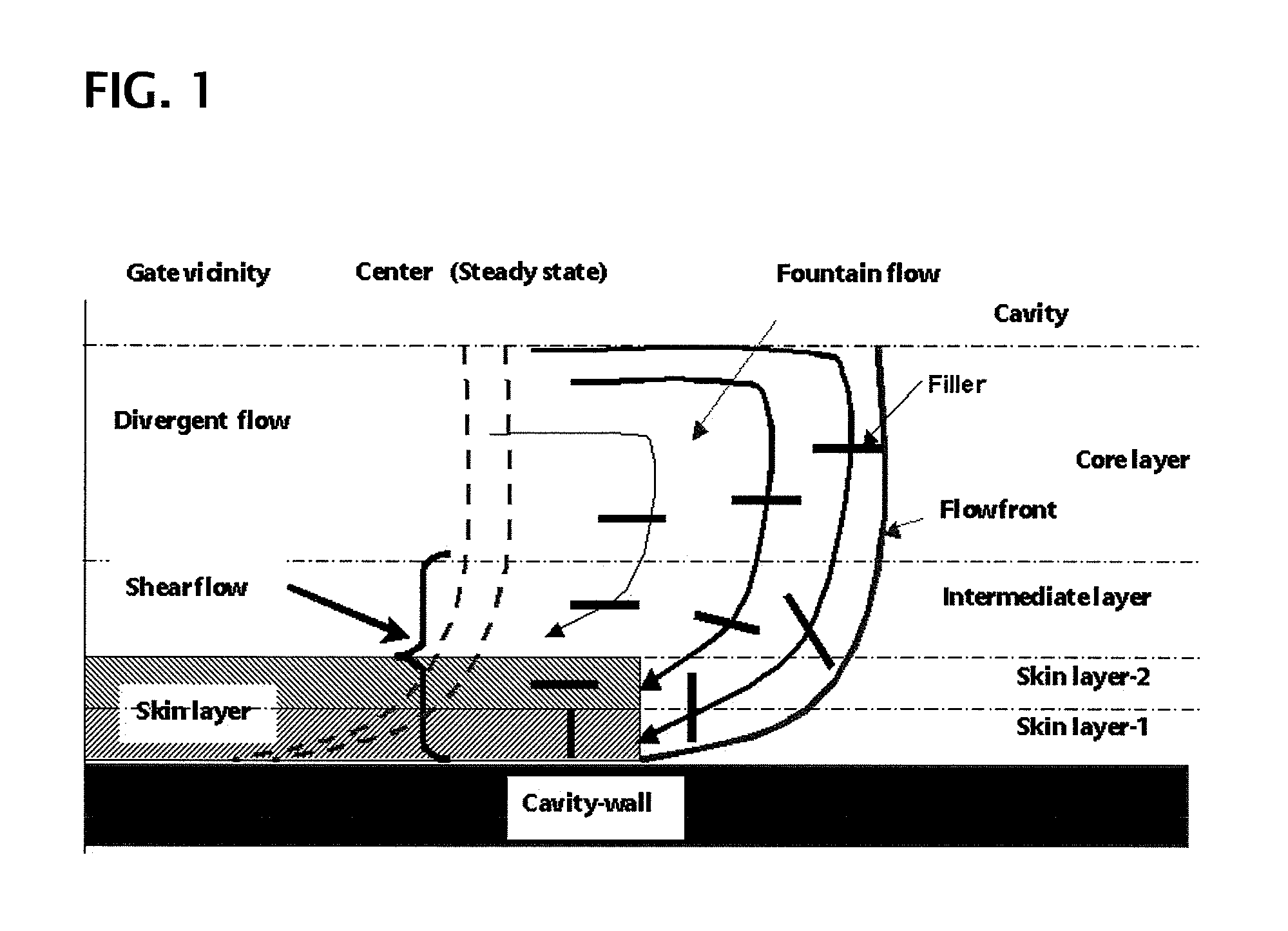Carbon fibrous aggregator, method for manufacturing thereof, and composite material including thereof
a carbon fiber and aggregator technology, applied in the field of aggregators, can solve the problems of insufficient control of cnt synthesis under nano level, poor manufacturing efficiency, and insufficient fulfillment of the need for ideal additives, and achieve uniform electrical conductivity and stably various physical properties
- Summary
- Abstract
- Description
- Claims
- Application Information
AI Technical Summary
Benefits of technology
Problems solved by technology
Method used
Image
Examples
example 1
[0216]In Example 1, using raw material blending ratio, temperature conditions, and gas flow rates as shown in Table 7, and setting the operation condition to 3 hours, the first intermediate of the carbon fibrous aggregators was synthesized.
[0217]On the operation, the temperature control of the temperature zones (A), (B), and (C) shown in FIG. 5 was performed by setting the cooling gas flow rate to 8 NL / min. The reaction yield (=(weight of the obtained carbon fiber aggregators / weight of carbon in the raw material)×100) was found to be 41.1%. With respect to the carbon fibrous aggregators which were obtained from the first intermediate after undergoing the above mentioned steps such as the heat treatment, it was found that the mean outer diameter of fibers was 19.0 nm, the standard deviation of fiber outer diameters was 5.5 nm, the coefficient of variation of the fiber outer diameters was 28.9%. The distribution of the fiber diameters is shown in Table 1, and the distribution histogra...
example 2
[0218]In Example 2, using raw material blending ratio, temperature conditions, and gas flow rates as shown in Table 7, and setting the operation condition to 3 hours, the first intermediate of the carbon fibrous aggregators was synthesized.
[0219]On the operation, the temperature control of the temperature zones (A), (B), and (C) shown in FIG. 5 was performed by setting the cooling gas flow rate to 6 NL / min. The reaction yield was found to be 61.1%. With respect to the carbon fibrous aggregators which were obtained from the first intermediate after undergoing the above mentioned steps such as the heat treatment, it was found that the mean outer diameter of fibers was 37.8 nm, the standard deviation of fiber outer diameters was 9.9 nm, the coefficient of variation of the fiber outer diameters was 26.2%. The distribution of the fiber diameters is shown in Table 2, and the distribution histogram thereof is shown in FIG. 7.
example 3
[0220]In Example 3, using raw material blending ratio, temperature conditions, and gas flow rates as shown in Table 7, and setting the operation condition to 3 hours, the first intermediate of the carbon fibrous aggregators was synthesized.
[0221]On the operation, the temperature control of the temperature zones (A), (B), and (C) shown in FIG. 5 was performed by setting the cooling gas flow rate to 4 NL / min. The reaction yield was found to be 67.8%. With respect to the carbon fibrous aggregators which were obtained from the first intermediate after undergoing the above mentioned steps such as the heat treatment, it was found that the mean outer diameter of fibers was 61.5 nm, the standard deviation of fiber outer diameters was 14.3 nm, the coefficient of variation of the fiber outer diameters was 23.3%. The distribution of the fiber diameters is shown in Table 3, and the distribution histogram thereof is shown in FIG. 8.
PUM
| Property | Measurement | Unit |
|---|---|---|
| outer diameter distribution | aaaaa | aaaaa |
| outer diameter distribution | aaaaa | aaaaa |
| outer diameter distribution | aaaaa | aaaaa |
Abstract
Description
Claims
Application Information
 Login to View More
Login to View More - R&D
- Intellectual Property
- Life Sciences
- Materials
- Tech Scout
- Unparalleled Data Quality
- Higher Quality Content
- 60% Fewer Hallucinations
Browse by: Latest US Patents, China's latest patents, Technical Efficacy Thesaurus, Application Domain, Technology Topic, Popular Technical Reports.
© 2025 PatSnap. All rights reserved.Legal|Privacy policy|Modern Slavery Act Transparency Statement|Sitemap|About US| Contact US: help@patsnap.com



